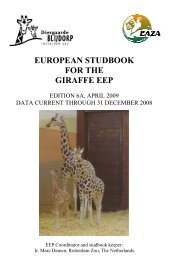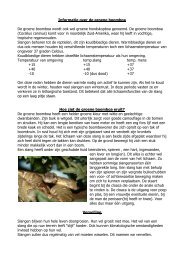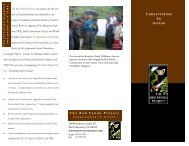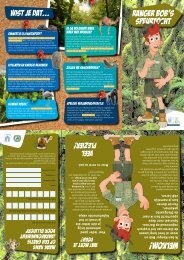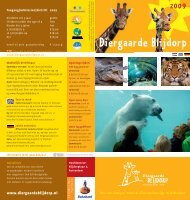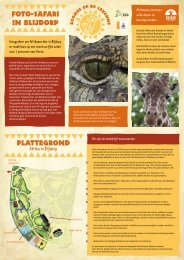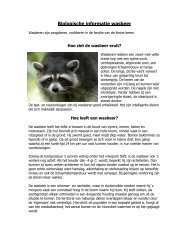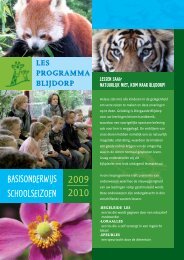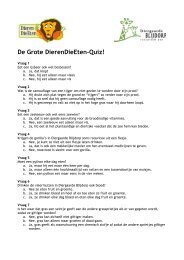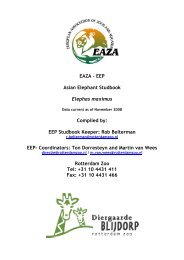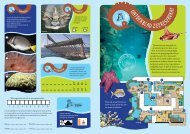You also want an ePaper? Increase the reach of your titles
YUMPU automatically turns print PDFs into web optimized ePapers that Google loves.
<strong>EEP</strong> STUDBOOK CROWNED PIGEONS<br />
Also young birds are taken out of the nest, shortly before fledging, and kept as pets. This is<br />
mostly done with Blyths hornbills, sulphur-crested cockatoos and eclectus parrots.<br />
Source of income<br />
Residents of the Lakekamu Basin sell garden and forest products to government personnel at<br />
the bi-weekly market held in Kakoro. Peanuts and betelnuts are also sold in urban markets in<br />
Kereman, Wau and Port Moresby, where a large bag of betelnut is worth up to K 200. The<br />
Lakekamu Basin is said to be one of the few areas in Papua New Guinea where a year-round<br />
harvesting of betelnut is possible. Harvests of coffee and cacoa, planted throughout much of<br />
the area, have been limited because of transportation problems (Filer and Iamo, 1989).<br />
While avocados and pineapple grow well in the basin, they have not been exploited<br />
commercially for the same reason. Okari nuts (in season), meat from wild pigs, crocodile<br />
skins and feathers (from birds of paradise, sulphur crested cockatoos, crowned <strong>pigeon</strong>s and<br />
cassowaries) are also sold in the markets of Port Moresby. Much of the money earned on such<br />
trips to urban markets is spent on travel and other expenses, although people usually return<br />
home with some durable goods, such as kerosene laterns, cooking pots, transistor radios (with<br />
batteries) or clothing. A few residents of the basin earn small sums of money by farming and<br />
selling colourful beetles and butterfly larvae to the insect-marketing program sponsored by<br />
the Wan Ecology Institute (Orsak, 1991, Hudson, pers. comm.). The Wan Ecology Institute<br />
also trains farmers in growing plants for the insects and in managing their own farm. They<br />
start planting plant species, which are common, and are a habitat for those highly demanded<br />
butterfly species around their houses and at other appropriate sites. In this way, the plants<br />
attract the insects, and the villages do not have to catch the insects through the whole forest.<br />
Some of the residents of the Lakekamu Basin are involved in small-scale alluvial gold mining<br />
in the creeks that run through the hills north of Kakoro (Filer and Iamo, 1989). The Biaru<br />
have panned for gold in Nowi creek for more than a decade. The residents of a settlement<br />
known as Bundi Camp, located just north of Kakoro on the Biaru River, migrated into the<br />
basin from Goroka (Eastern Highlands Province) to work at local gold deposits. The Kurija<br />
residents of Mirimas village pan for gold in the eastern tributaries of the Oreba River (Filer<br />
and Iamo, 1989). Some of the residents of the Kamea village of Iruki migrated to the basin to<br />
work the gold at Omoi Creek (also known as Cassowary Creek). In the late 1980s, the Biaru<br />
invested in dredging equipment, but this angered the Kurija, who claim ownership of the land<br />
beside Nowi Creek. With support from the Kovio, the Kurija raided the Biaru mining camp,<br />
destroying their equipment and causing a <strong>number</strong> of injuries. More substantial gold reserves<br />
have been located near the Olipai River, a western tributary of the Lakekamu River. Several<br />
mining companies continue to prospect for additional deposits in the mountains north of the<br />
Lakekamu Basins (Makamet and Sengo in CIRAP), 1996).<br />
Timber is another potential resource. The government has not granted any logging<br />
concessions in the Lakekamu Basin, although a proposed timber project in Gulf Province<br />
would encompass the Southwest corner of the basin (Werner in CIRAP, 1995). Several<br />
Malaysian timber companies have expressed their interest in obtaining logging rights for the<br />
remainder of the basin (Beehler in CIRAP, 1995) but so far without any success.<br />
134



